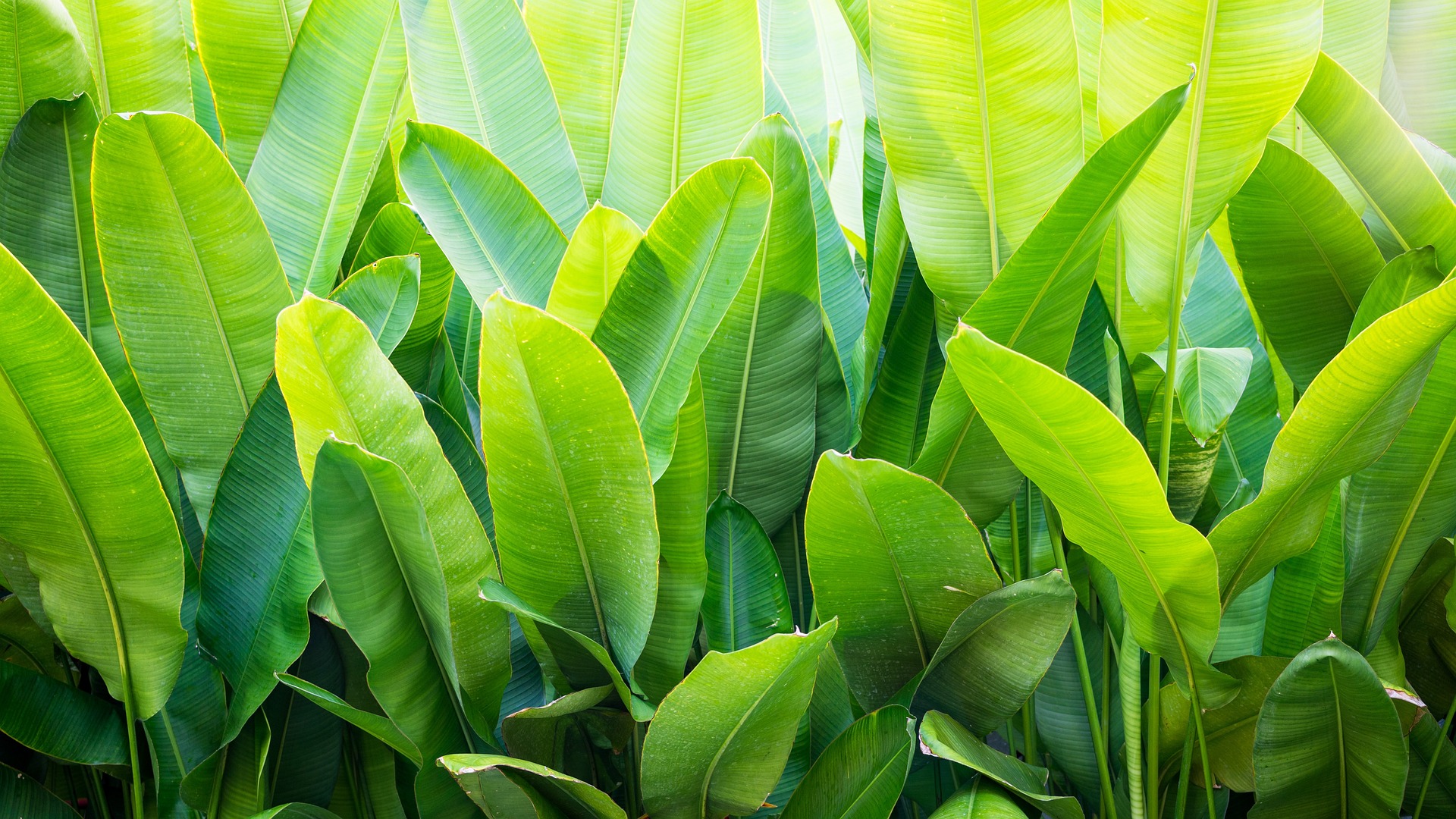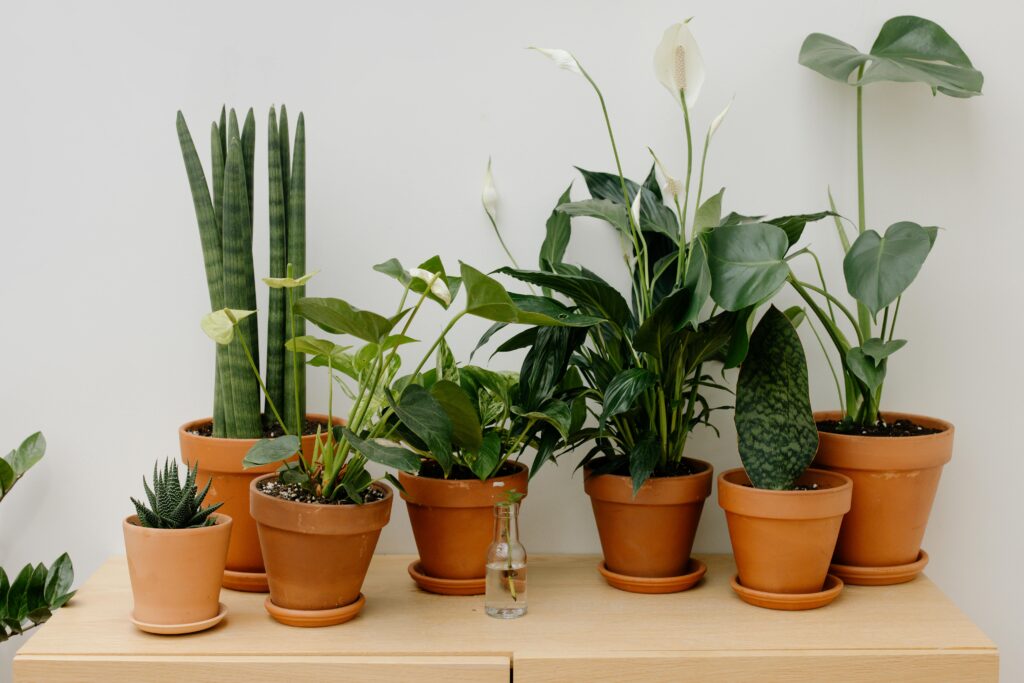Continue reading this comprehensive care guide to add some outdoor appeal to your home by having a banana plant indoor. Learn expert tips on which variety to use as well as advice on light, water, soil, and humidity for an indoor banana plant to remain healthy. Perfect for those interested in adding a fresh tropical mood to their house.

Table of Contents
Choosing the Right Banana Tree Plant
- Dwarf Cavendish: Among the most cultivated banana indoor plants growing up to 5–6 ft tall. A lush green leaves will characterize your plant and with proper care, it may bear sweet bananas.
- Dwarf Red Banana: By far the most noticeable characteristic of it is the red-purple color of its leaves. Though bananas are but possible, the plant has an aesthetic presence that is most appreciated for its dynamic tropicality.
- Musa ‘Truly Tiny’: For those who have limited space, this compact variety is only as tall as 2 ft. It is appropriately placed in desks or in alcoves along the wall.
- Dwarf Orinoco: It is a hardy choice that will tolerate a variety of indoor growing environments. This plant grows a bit taller and is a pleasing fixture in any indoor environment.
Banana Plant Care Indoor
Light Needs
- South or West-Facing Windows: In these areas you’ll find there is more or less continuous light. Place your plant near this spot in order to facilitate healthy development.
- Supplement with Grow Lights: If there is no direct sunlight, fill the plant’s requirements with the full-spectrum grow lights.
- Rotate Regularly: Shake up your plant fortnightly to ensure it receives equalized light and has a straight growth form.
- Watch the Leaves: That is when you see your leaves turning pale or growing at a slower rate than they normally would; it means your plant isn’t getting sufficient light. If you find that the leaves are not colorful or growing steadily move the plant to a brighter place.
Temperature & Environment
- Ideal Temperature Range: The banana indoor plants thrive in a temperature variation that is from 65°F to 85°F (18°C to 29°C). Keep your plant away from freezing—a temperature of less than 55°F (13°C) can slow growth and damage the leaves.
- Avoid Drafts & Fluctuations: Put your plant in one place without exposing it to outside cold gas from windows, doors, or air conditioning mechanisms. Temperature quick fluctuations can result in leaf curl or browning.
- Indoor Placement: Choose a sunlight-filled, warm, corner such as a sunroom or a south-facing window. Numerous fluctuations in the temperature can make the growth or development processes healthy and regular throughout the year.
- Tropical Vibes: Get other plants that require high moisture and place it in your space to help increase the level of humidity and also create a natural environment for your banana plant.
Water & Humidity for Banana Indoor Plant
- Regular Watering: Make sure you give the banana plant some water when the surface inch or two of the soil is dry. Keep soil well watered, be careful not to waterlog or over dry soils.
- Proper Drainage: Make sure that your pot has drainage holes that will allow the water to maneuver out when necessary. This little measure prevents water collection to the roots, which would cause damage.
- High Humidity: Optimum results are attained when banana plants are maintained at a humid atmosphere and from 60-80%. Consider getting a humidifier, or a humidity tray surrounding the plant, to increase air moisture around the plant.
- Misting Leaves: When humidity levels are low in a home environment, use a spray bottle to provide your plant with a light mist once or twice per week.

Soil & Feeding
- Well-Draining Soil: Choose quality potting soil with drainage that is appropriate for both tropical and indoors fruiting plants. Compost, and peat are excellent ingredients for a well draining soil mixture.
- Nutrient-Rich Base: Banana plants are heavy feeders. Make sure your soil has great organic content so that you can have healthy foliage and strong stems.
- Fertilize Monthly: During the periods when the plant grows actively (spring-summer) a balanced liquid fertilizer (10-10-10 or 20-20-20) should be applied monthly to cultivate the healthy development. This is exactly what they need to grow fast during this age.
- Reduce in Winter: Lower the application of fertilizer in fall and winter when the rate of plant growth slows down automatically. When growth slows down comparing fertilizer may sharpen the risk of canopy root damage and salt accumulation in the soil.
Pruning & Care
- Remove Dead Leaves: Pluck yellow, brown or damaged leaves from the base of the plant with clean sharp scissors or pruners. This will facilitate ventilation and help your plant look neat.
- Thin Crowded Growth: As your plant continues to grow it can produce further offshoots or “pups”. Trim a few so as not overcrowd the main stem and give it room to grow.
- Monitor for Pests: Check your plant closely for the presence of spider mites, aphids, or scale on leaves or stems of the plant. In case there are pest problems in the plants, neem oil or insecticidal soap should be used in a bid to cure.
Propagation for Banana Plant Indoor
- Identifying Pups: Please identify the little sprouts coming from the main banana indoor plant base. These are pups, which are young plants formed direct from the roots of an older plant.
- Separate the Pups: Once the pups have developed a handful of leaves and roots you may carefully divide them off the main plant. Carefully lift the plant out of its pot and with clean, sharp scissors or a knife cut the pups from the main root system.
- Replanting the Pups: Put each pup in its own container, with fresh, well-drained potting mix. It’s important that the pot has openings through which excess water could escape to avoid root rot.
- Care After Propagation: Water the just-planted pups deeply and position them so that they do get bright but not direct light. Make sure soil is neither too dry nor too wet, and add some shade, as the pups need to adjust after propagation.
Repotting
- When to Repot: Transplant your plant annually or biannually, best before growth season, at the start of spring. Indications of plants are those which have roots escaping the sides of the drainage holes or have seen a drop in growth rate.
- Choose a Bigger Pot: Move the plant to a pot that has 2 or 4 inches more diameter. Select a pot which provides good drainage and eliminates the danger of root rotting.
- Refresh the Soil: Add new, rich soil to your pot to assist the plant’s growth and vigor. For best results, add compost or organic matter to the soil.
- Be Gentle with Roots: Abrupt the soil around the roots and cut away any roots that have been diseased or dead. After repotting it, deep water it and place it in a area of relaxing light for several days to allow for the transition.
Final Thoughts
The addition of a banana plant indoor specimen will bring some exotic charm into your home. Provided that the right plant is selected, the right lighting, the right humidity is maintained and that the plant is taken care of in terms of watering, your indoor banana plant will flourish. Provided with the right care and time, your banana plant will flourish, adding life’s vivid greens and ornamental value to your interior.

